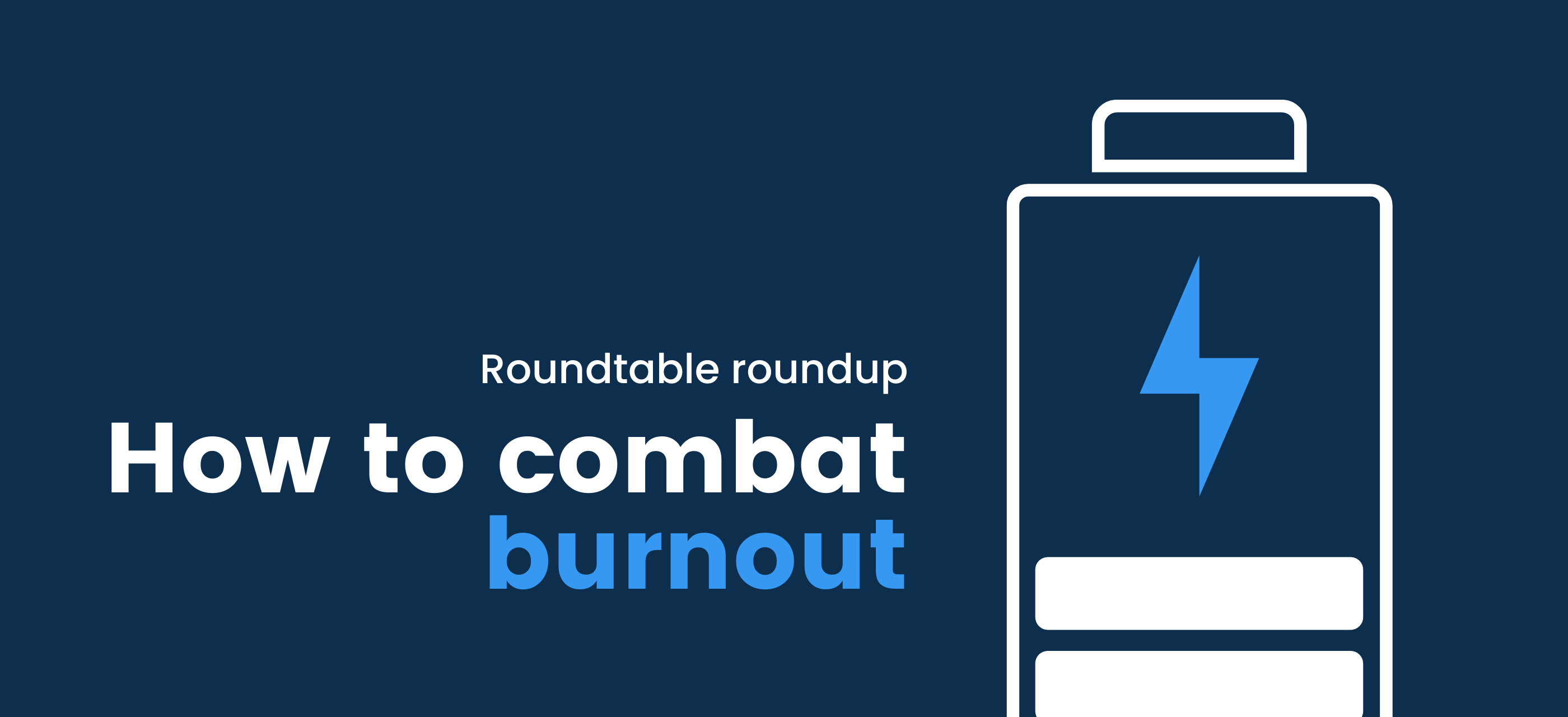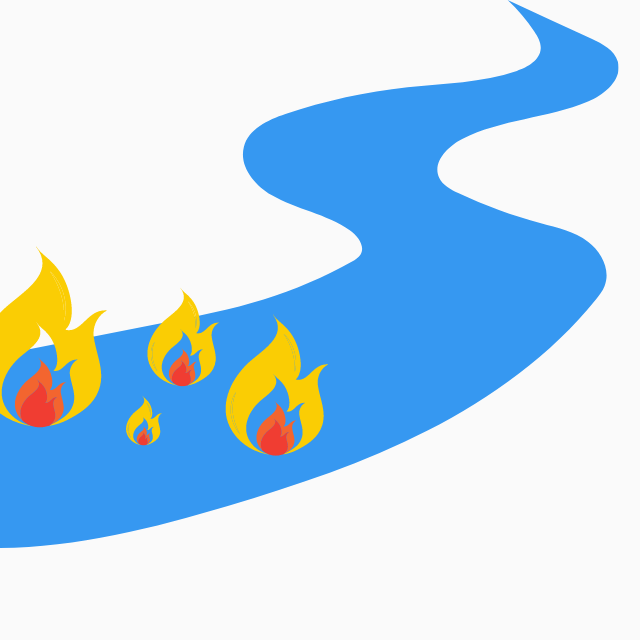It’s a fact: there’s a worldwide burnout problem
New research from PwC and Atlassian released last week found “one in four respondents experienced ill mental health and distress, … and an inability to switch off from work/burnout was experienced by 30%of Gen Z and 23% of Gen Y employees in the past 12 months.” For leaders, more than 81% of people have experienced or come close to burnout… even before COVID.
Furthermore, the World Health Organization has now included burnout in its International Classification of Diseases, describing it as “a syndrome conceptualised as resulting from chronic workplace stress that has not been successfully managed.” This clearly identifies a shift in responsibility to manage employee wellbeing and mental health at the organisational level rather than previous methods of ‘self-care’ placed on the individual.
The good news is organisations are recognising the problem and taking action. Where does your organisation stand? Here’s how to find out and what to do about it.
Burnout is on the agenda of 87% of organisations*
Our recent roundtable with senior leaders from leading Australian midcap businesses revealed that 87% of them have burnout and individual wellbeing as a top priority on the agenda within their organisations - a testament to the relevance of recently published burnout statistics.
Not only was the importance and urgency of the burnout problem palpable throughout the discussion, but the desire for a realistic and effective solution was unanimous.
To prevent burnout, we need to look at thecauses of burnout which, according to research from UC Berkeley and Deakin, are all organisational levers:
- Unsustainable workload
- Perceived lack of control
- Insufficient rewards for effort
- Lack of a supportive community
- Lack of fairness
- Mismatched values and skills.
*of organisations who have joined our roundtable discussions
Bouncing back from burnout, step by step
Together, we formulated the following step-by-step course of action as a pathway to bouncing back from burnout.
Step1: Size up the problem
Is there a burnout problem in your organisation and how do you find out?
- Use quantifiable indicators:
- Engagement / pulse survey insights
- Attrition rates or spikes in demand for more resources
- sick leave balances
- meeting fatigue
- Determine:
- “Is it a resource problem or a prioritisation problem?” As Nicole, COO of Impellam APAC, pointed out “recruitment is hard (especially right now) and onboarding takes its own time.”Can we deprioritise work to free up the capacity we need?
Step 2: Get it on the agenda
There’s been a shift: talent are driving the agenda and execs are changing their mindset. Burnout is on the strategic agenda for 87% of participants.
- Make the case to address burnout:
- A new war for talent: We’re in the tightest talent market in 20 years - if people burnout, it will stall revenue growth. And if we can’t offer sustainable work options, we’ll have a succession issue: “Employees value well-being over climbing the ladder. Forget “live to work.” Over 60% of workers surveyed are willing to turn down a promotion to protect their mental health.”
- Financial risks: Under Work Health and Safety laws, organisations must eliminate or minimise the risk to psychological health and safety arising from work, with workload as a key contributor to this stress. In reality, employees at (or close to) burnout are less productive and more likely to result in costly absenteeism and attrition.
- Employer brand risk: There is increasing societal pressure on organisations to act responsibly and ethically. Bad press and poor Glassdoor reviews just aren’t worth it.
Step 3: Take stock of current processes
Only 31% of roundtable participants’ organisations have an available solution to, or ways to, prevent burnout right now. Whether you do or don’t, take a moment to ask your people what they’re doing to manage their workloads, mental health and risk of burnout.
- Keep what’s working
- Stop what’s not working
You may find you’re investing in gym memberships or other wellbeing initiatives which aren’t valued or are unrealistic for some employees to enjoy. The only way to find out is by asking.
Step 4: Implement fair downstream tactics
Some tactics to fix the problem for employees:
- Take a break: some organisations are providing paid days off in addition to annual leave allowances. Hubspot recently gave their whole workforce a week off with their ‘Hubspot Unplugged’ program, designed to combat burnout. Some organisations in the roundtable have implemented a series of ½ or full days off. Others are encouraging employees to use their annual leave.
- Reduce meetings: some organisations from the roundtable have Implemented ‘no meeting Fridays’.
- Offer support: coffee catch-ups, personal coaching conversations and virtual team activities where the employee has expressed it’s helpful
- Workload analysis and changes: look at the work - both the content and nature of the work - of each employee. Is it an unrealistic amount of work? Is it mostly de-energising work? Can low importance work be re-allocated or de-prioritised?
Tactics to support leaders:
- Group coaching for leaders: Open the discussion and provide tools to create boundaries for them and their teams like daily rituals and ways to communicate ‘No’.
- Beam runs ‘creating boundaries’ group coaching for 6-10 people, designed to help implement this tactic
- Qualify tasks and requests from the top: Confirm they are strategic, important and not just asks made on a whim - the goal is to reduce the unimportant, but urgent and ‘busy’ work
- General Mills have implemented a practice to minimise non-strategic asks from the leadership team - employees are encouraged to quantify asks to ensure their workload is aligned with important business priorities
- ‘Team Flex’: A workshop which brings teams together to commit to better ‘ways of working’. The design of the workshop prompts leaders to share openly and be vulnerable, thereby providing licence for their team to speak openly about challenges such as burnout.
- If this sounds like an approach that might work for you, Beam can help - we co-designed ‘Team Flex’ with General Mills.
The key to success with step 4 is fairness, a key insight from our roundtable discussion. ‘The lack of fairness is one of 6 primary causes of burnout. Whatever options we provide, personal coaching or access to flexible work, we need to provide to all. If managers are left to come up with different solutions for each of their teams, burnout will increase. We need consistent, organisational approaches.”
Step 5: Implement upstream fixes
The group discussed two powerful interventions we can take to prevent burnout:
Adjusting workloads
Gallup researchhas shown that the tipping point for burnout risk is an average of 50 hours, and rises even more substantially at 60 hours. With days increasing by 11% and meetings increasing by 13% during the pandemic, re-setting on workloads is imperative. Here are a few ways you can do it.
- Conscious role design:
- plan for a good mix of energising vs. de-energising work
- bring importance of tasks back into focus
- prioritise activities aligned with overall business goals and de-prioritise unimportant work
- identify new resource requirements or automation opportunities
- Prioritise
- Reduce meetings:
- length
- Cadence
- participation
- Give control: a way to manage upwards, deprioritise unimportant work, or say no to new asks
- Provide a sense of purpose: empower individuals to map their skills and values against their work tasks
- Redistribute work across teams:
- a fairer, equitable distribution of wok
- think about work scope in a more dynamic, fluid way - responsibilities may need to be reallocated frequently in order to manage workloads
- Innovation: Liss Kirby, Head of Melbourne for Q5, provided a strategic perspective: ‘disaggregate activities to invest in automation or re-imagine capability and skill sets’
From a Talent Acquisition perspective, leaders need to set realistic expectations with hiring managers for time to ramp up, on-board and be realistic about a learning curve. This tip, shared by Jane Boyle from Macquarie Telecom at our roundtable, is critical to starting employees off on the right foot with workloads at your organisation.
Jo Barr shared Cotton On’s intervention to “pause and reset”, explaining that we’ve all jumped into other people’s lanes to help during Covid, but it’s time to get back into our lanes and get role clarity. Despite good intentions, leaders risk giving the impression they don’t think their employees are capable of doing a good job on their own.
To empower individuals, Cotton On are asking “how are you going to sustain your optimum performance and wellbeing?” - an effort to provide connection between workload and purpose.
Improve leader capability & role-modelling
Our people leaders are often the most at-risk group for burnout - managing upwards, outwards, sideways and downwards. They hold responsibility for outcomes but have little visibility into what their people are doing in a remote or hybrid work environment. We need to support them with the above tactics , and give them back control of their own workloads. Leaders are employees, too.
And if the new measure of high performance is sustainable working with a focus on the highest value work (rather than the longest hours we can keep), then it calls for a cultural shift where leaders need to set an example and be a catalyst for change. They need to believe - and show - they are more effective if they have energy and time for themselves. The analogy of high performance athletes needing rest time and highly tailored ‘work’ activities can resonate well.
Effective leadership can reduce burnout in their teams by:
- Providing a supportive community for their teams and peers
- Openly discussing mental health at work
- Showing empathy and vulnerability
- Sharing their own workload and “owning what we stop”
- Actively redesigning roles across their teams to ensure people have sustainable, engaging roles
How do we keep ourselves accountable for avoiding burnout ongoing? Ruthless prioritisation, tight meeting boundaries, consciously planning ‘deep thinking’ work vs collaborative work, and using efficient communication channels (ie reducing distraction of notifications, minimising email noise) are all smart ways to work. Delegating decisions by giving authority to peers or direct reports can be good for succession planning as well as your own workload!
This is important not only for leaders themselves, but also the people they manage. As Mike Hagan, GM at Bosch, observed, “what’s important to your boss becomes important to you - it’s the only way”. Active role-modeling through their work hours, open dialogue and showing vulnerability, and asking for help are very powerful in driving healthy team behaviours and avoiding burnout.
The critical component to implementation
Visibility. Visibility, visibility, visibility. Shall we say it again?
We need to get visibility into whether people are working excessive hours, their workloads are unsustainable and people are disengaged with their work. Without visibility, how can we figure out which people are at risk or nearing their critical points? We can’t. Without visibility, we’re effectively flying blind.
Tools and technology like Beamible can provide the visibility you need while enabling a consistent, intuitive approach to prioritisation and role design.
A case-study
A major retailer has used Beamible to re-calibrate workloads to address burnout.
Using Beamible data, they identified a difference in processes between various stakeholder teams which made the business case for resourcing to support the people whose workloads were affected.
Beamible is a work design platform - it helps managers and their teams to map out their roles and what work is done across the team. In the screenshot below, you can see the Leadership team with the State Marketing Managers. The leader of this team invited her team members to fill out their roles.
As you can see it provided some really powerful insights and data. When the leader of this team implemented Beamible, looking across the team, it was very apparent that this particular person was spending much more time than the rest of their team on two tasks - The State Committee Meeting and preparing for The State Committee Meeting
The exercise saved a key leader from burning out and leaving the business in a role that had experienced high turnover in the past - for likely the same reason.
This is now a practice being rolled out across other areas identified by their engagement survey as having workload challenges.
You can also see how we can use the tagging system to address some of the HBR’s recommendations:
- Designing sustainable workloads in terms of hours, but also within the role, a mix of collaborative and deep thinking work
- Giving everyone in the organisation a perceived sense of control of what they are doing - both their priorities and what they can stop
- Providing a fair and equitable distribution of work, access to flexible work, learning opportunities etc.
- Clarity on team and individual priorities.
Wider implications: creating a culture to hire and retain top talent
It costs organisations so much money to find, hire, onboard and up-skill our talent. We want their careers to be rich and sustainable. We want leaders to be role-modelling lives beyond their aspirational jobs. If retention is a priority in this talent market, stimulating well designed jobs will be the differentiator for your organisation. Telling a compelling story about the actions you’re taking on workloads and burnout will resonate and provide a meaningful connection to people’s values.
Again referencing Atlassian’s insights, they challenge us to be bold: “now is the time to go big. Take a moment to look at what’s happening in the world around us and how those changes will impact our employees, customers, communities, and planet.
Beamible can help
- Assess burnout risk
- Uncover what’s driving burnout
- Prevent burnout through workload management and increasing leader capability
Speak to our team today about Beamible - the platform solution to help combat and prevent burnout in your organisation.





